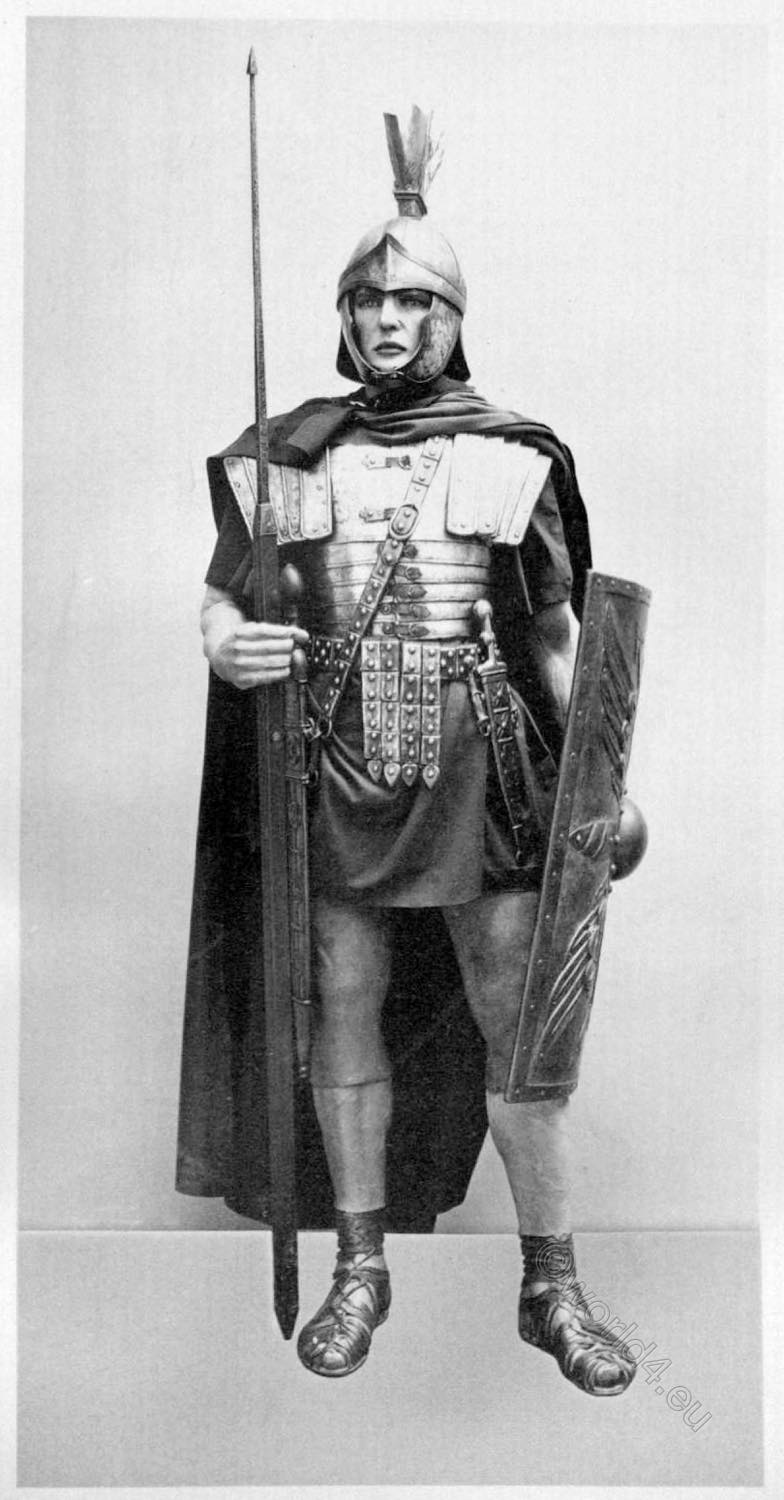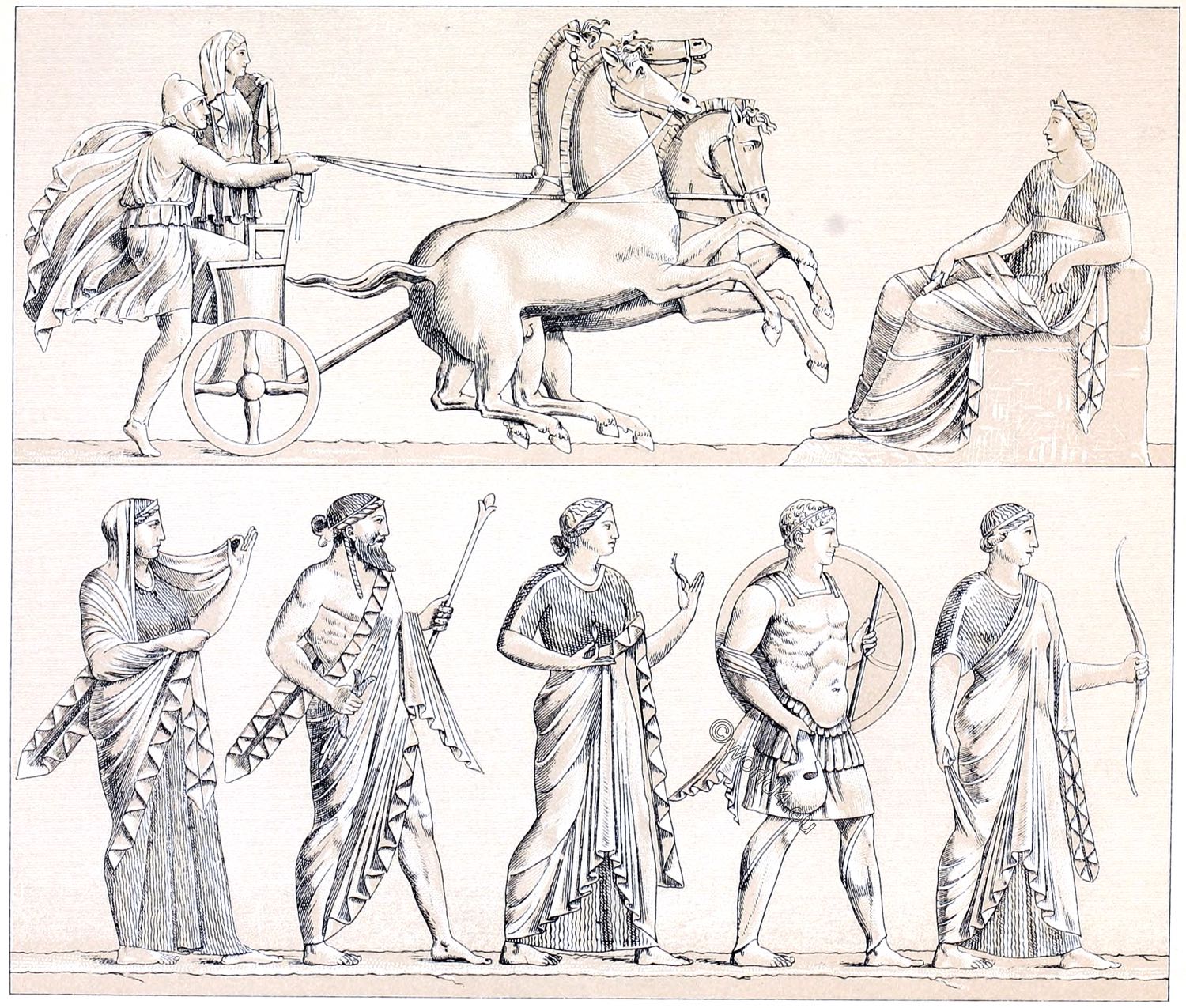
The Roman legionary.
Reconstructed after reliefs of the Trajan’s Column (Completed in AD 113). With the addition of original artefacts of the same period.
The Roman legionary was the infantryman who was part of the Roman legion. The Romans had to face various tribes that adopted different combat methods; this influenced both the organization and the structure of the legion and the type of armament used.
The simple soldier was called miles gregarius (legionary is a modern neologism derived from the Latin legionarius, plural legionarii, which could refer to all soldiers in a legion). The next level were the immunes, who were freed from the normal daily duty (guard), but were not yet supervisors. In the Centurie these were the horn player, cornicen, and the gunner, custos armorum, but there were also immunes in the staff service or in the civil administration. According to today’s understanding, they can be compared with higher ranks in military service.

From a military point of view, the legionary has always been a model of skill, experience and efficiency.
As principalis, the legionnaire then received a higher salary and superior function. In a centuria there was the optio as deputy of the centurion, who could also be optio ad spem, an optio standing in line for promotion to centurion. The signifer, the bearer of the standard, stood above the optio in rank, but not as a superior with authority to issue directives. There was also a tesserarius, a kind of company sergeant. The tesserarius received one and a half times the pay of a legionnaire (sesquiplicarius), signifer and optio twice the pay (duplicarius).
Iron helmet (Cassis), copper-plated with forehead shield, neck guard, cheek flaps and feather bush (Christa). The neckerchief (focal) is placed around the neck. Splint Mail (Lorca segmentata) consisting of two parts. Connected by hinges at the back, at the front by nestle and buckles. Special rails to protect the shoulders. Under the armour, the legionnaire wore a tunic with short sleeves, raised on both sides

The thighs were covered by short leather trousers. The lower legs were uncovered. The feet were in leather sandals. A wide cinculum belt, covered with iron plates, to which four metal strips of leather were attached at the front to protect the abdomen..
The thighs were covered by short leather pants. The lower legs were uncovered. The feet encased in leather sandals. Wide, with iron plates studded girdle (cinculum) are attached to the front with four metal studded leather strips to protect the abdomen.
The wide dagger (pugio) with an iron grip in a bronze-plated leather sheath hangs on the left side of the belt. Over the left shoulder the figure of the legionnaire depicted here carries the double-edged sword (gladius) with a wooden handle and bronze-plated leather scabbard on an iron sword hanger (balteus).
The shield (scutum) made of wood covered with leather and reinforced by rich copper fittings; with large shield navel (umbo). Inside the shield there is an iron handle and a small padding. The right hand holds the throwing spear (pilum). The legionnaire wears a coat (signum) which is fastened over his right shoulder by a fibula.
Source: Knights and soldiers from ancient to modern times. The weapons collection of Karl Gimbel.

Continuing
- Roman Costume and Fashion History.
- Roman clothing in its diversity and development.
- The early toga. Former roman clothing. 700 BC. – 500 BC.
- The Toga and the manner of wearing it.
- The costume of the Roman women. Republican Rome.
- The usual Roman garment during the Republican Rome.
- Roman Republic. Senator in the toga. A commoner in the paenula.
- The Togatus and the Roman ladies of the imperial period.
- The Roman Tunica or the Dorian and the Ionian chiton.
- Musical instruments. Wind and Stringed instruments of ancient Rome.
- Roman headgear and hairdos of antiquity.
- The Roman army. The legionary soldier. Equipment, assault weapons.
- Roman soldiers and gladiators. Function, armor and armament.
- The Roman legionary. Reconstructed after reliefs of the Trajan’s Column.
- The Lictor panel. A stately Roman lictor in a rich costume.
- The Roman Paenula. The cowl or hood. Traveling cloak.
- Pontifex Maximus. Roman high priest of antiquity. Collegium Pontificum.
- An Augur. Roman official priesthood.
- Religious sacrificial ceremonies of Romans in ancient times.
- The Clothing of the Vestal Virgins. The Cult of Vesta in ancient Rome.
- Shoes of antiquity. Sandals, closed footwear of the ancient world.
- The Etruscans. Culture, costumes, warriors in Etruria.
- Greek-Roman furniture. Throne chair, Bisellium, Sella castrensis.
- Greek-Roman art. Mosaics, painted bas-reliefs and wall paintings.
- A quadriga. Greek-Roman Gods. The ancient greek-roman culture.
- The Roman Ornament. Corinthian and Composite Capitals. The Acanthus.
- Rome. The atrium. Interior of an ancient Roman palace.
- Pompeji. Roman architecture. The Pompeian House. The Atrium.
Discover more from World4 Costume Culture History
Subscribe to get the latest posts sent to your email.






